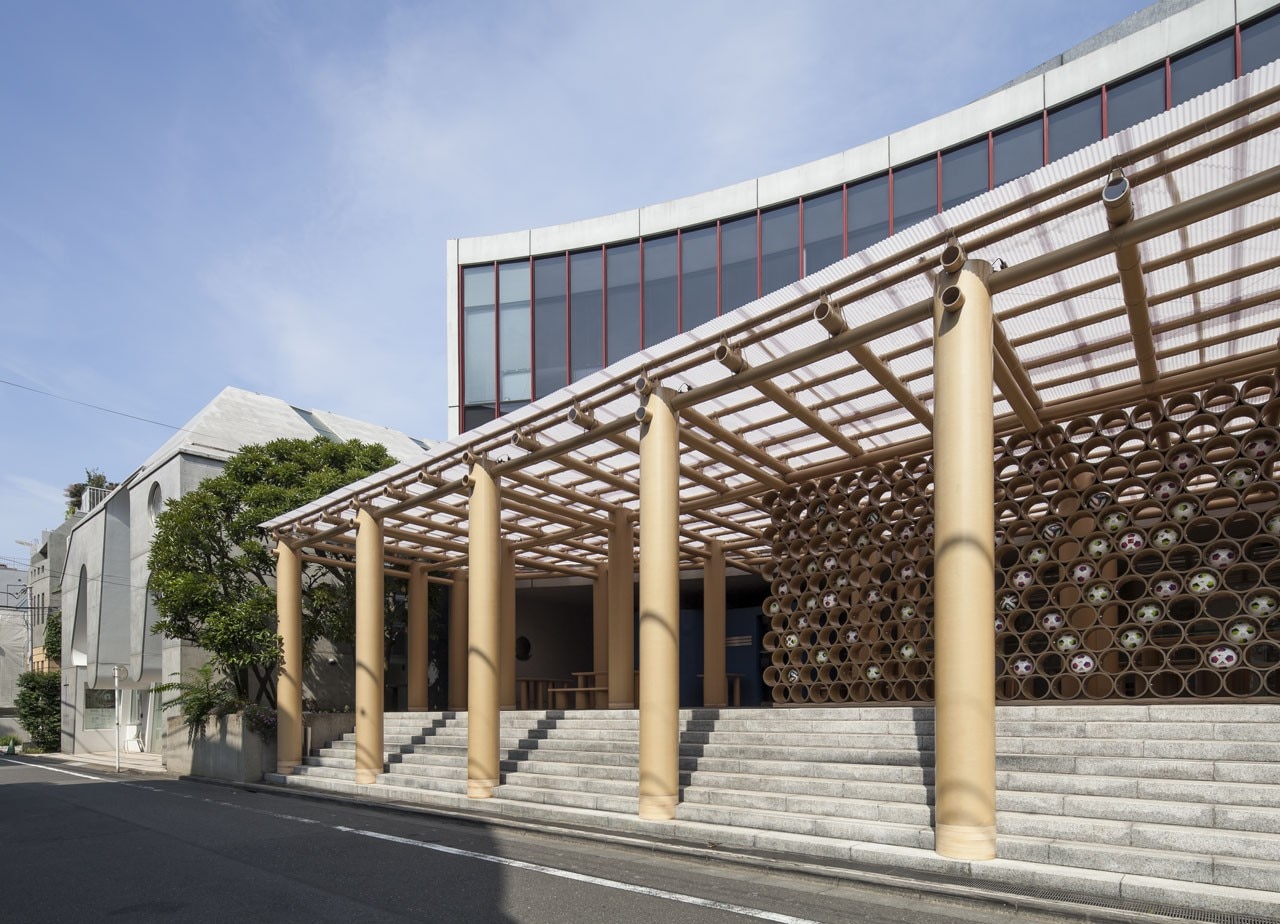
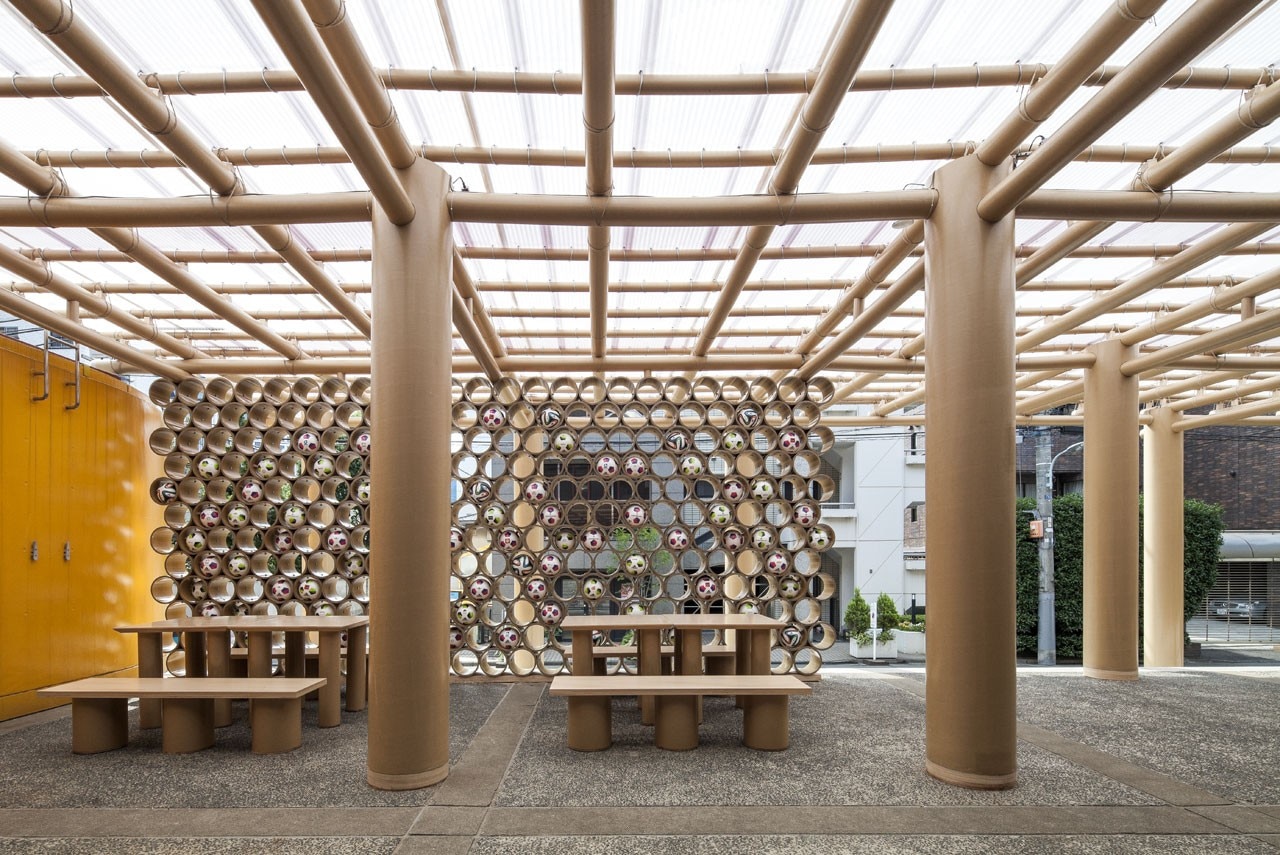
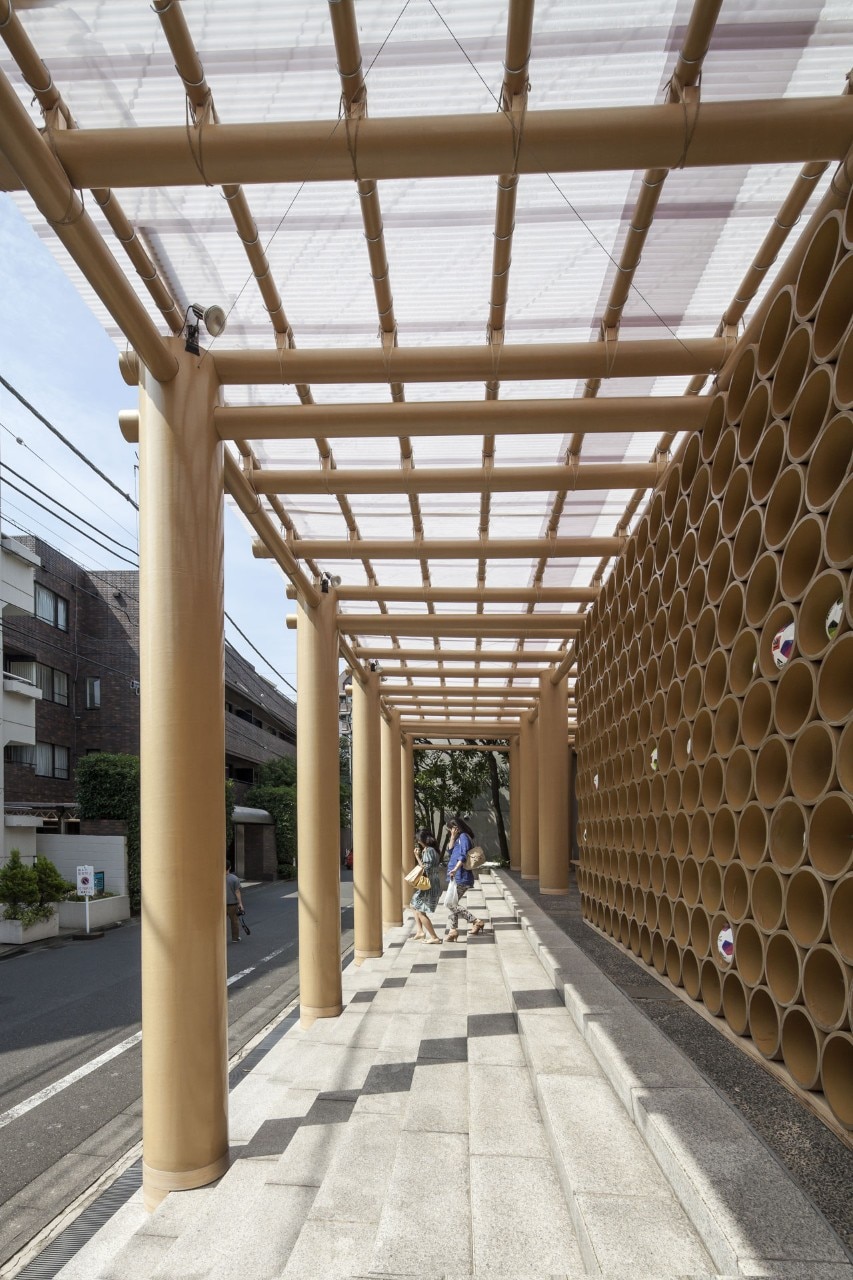
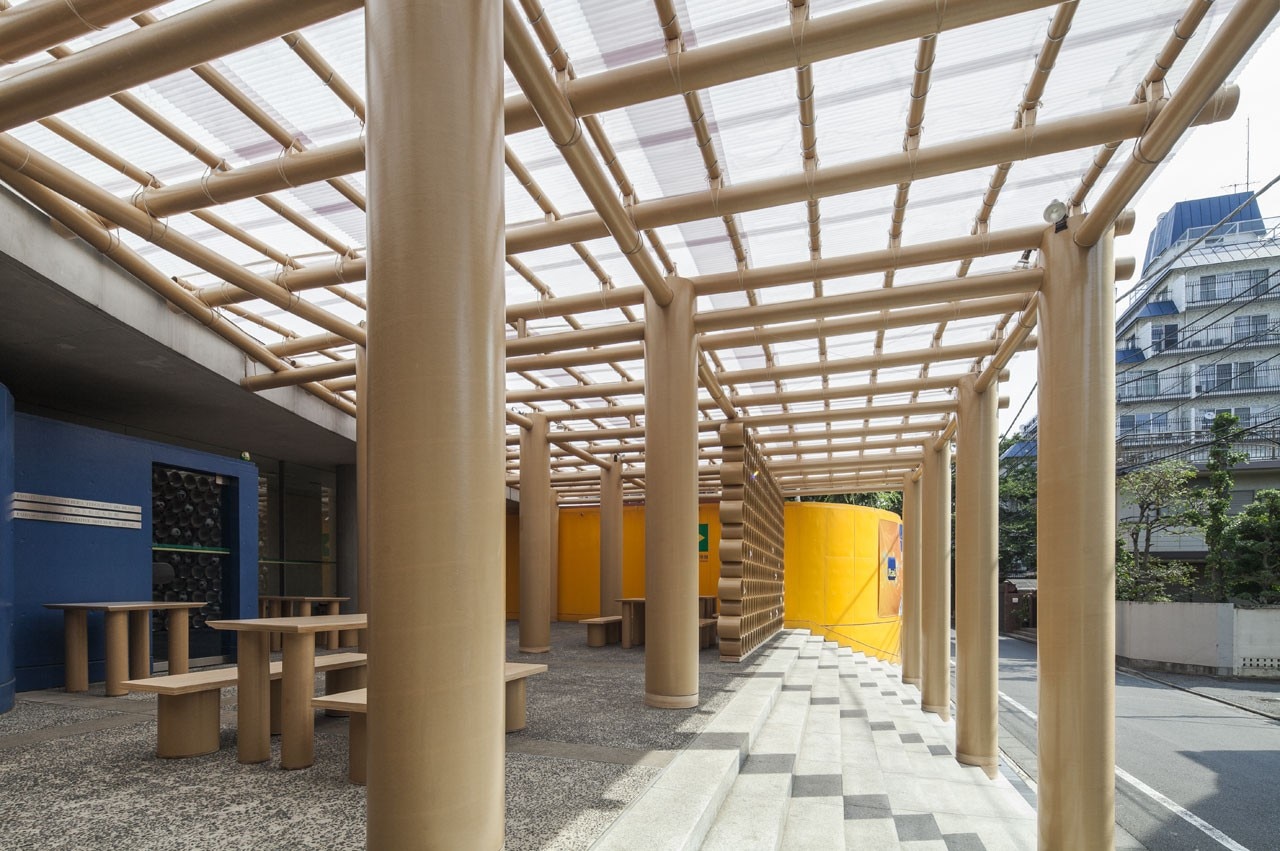
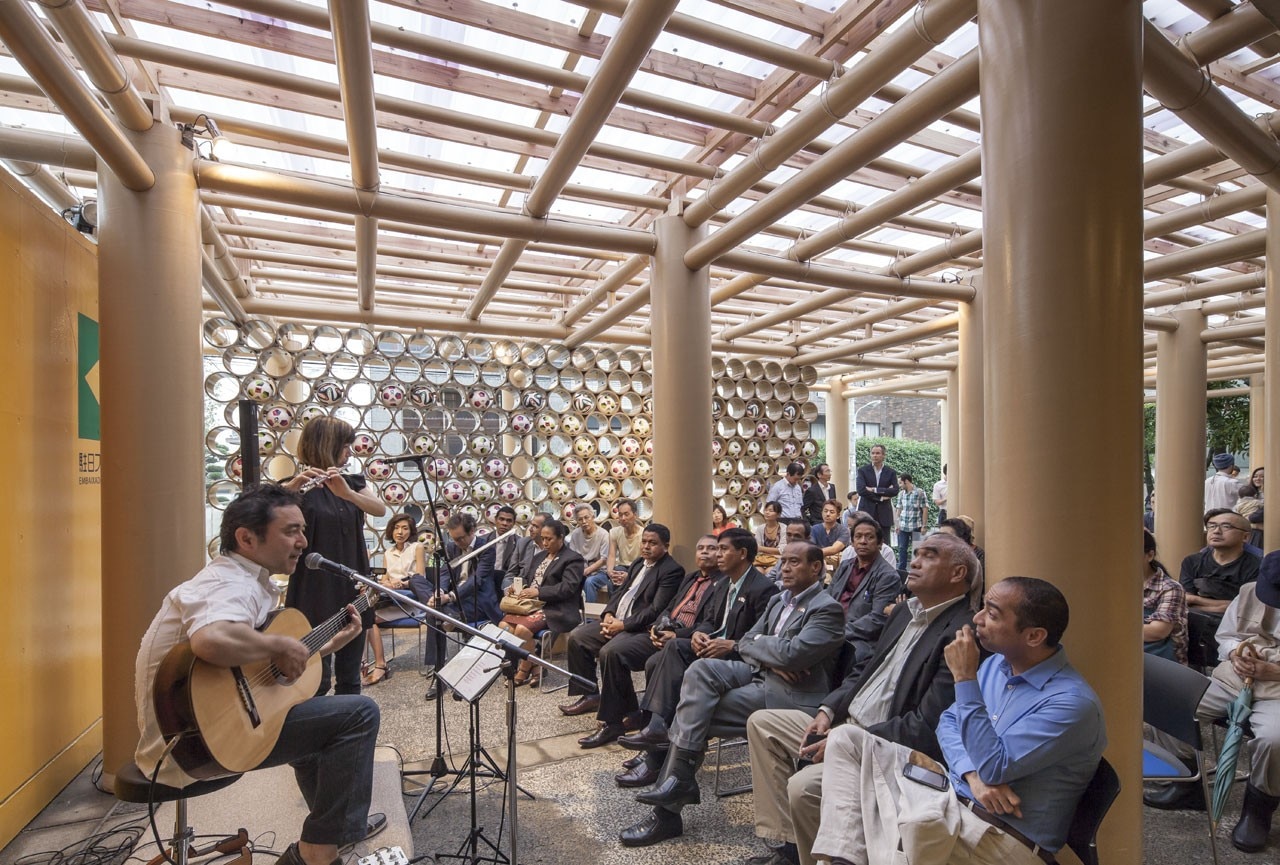
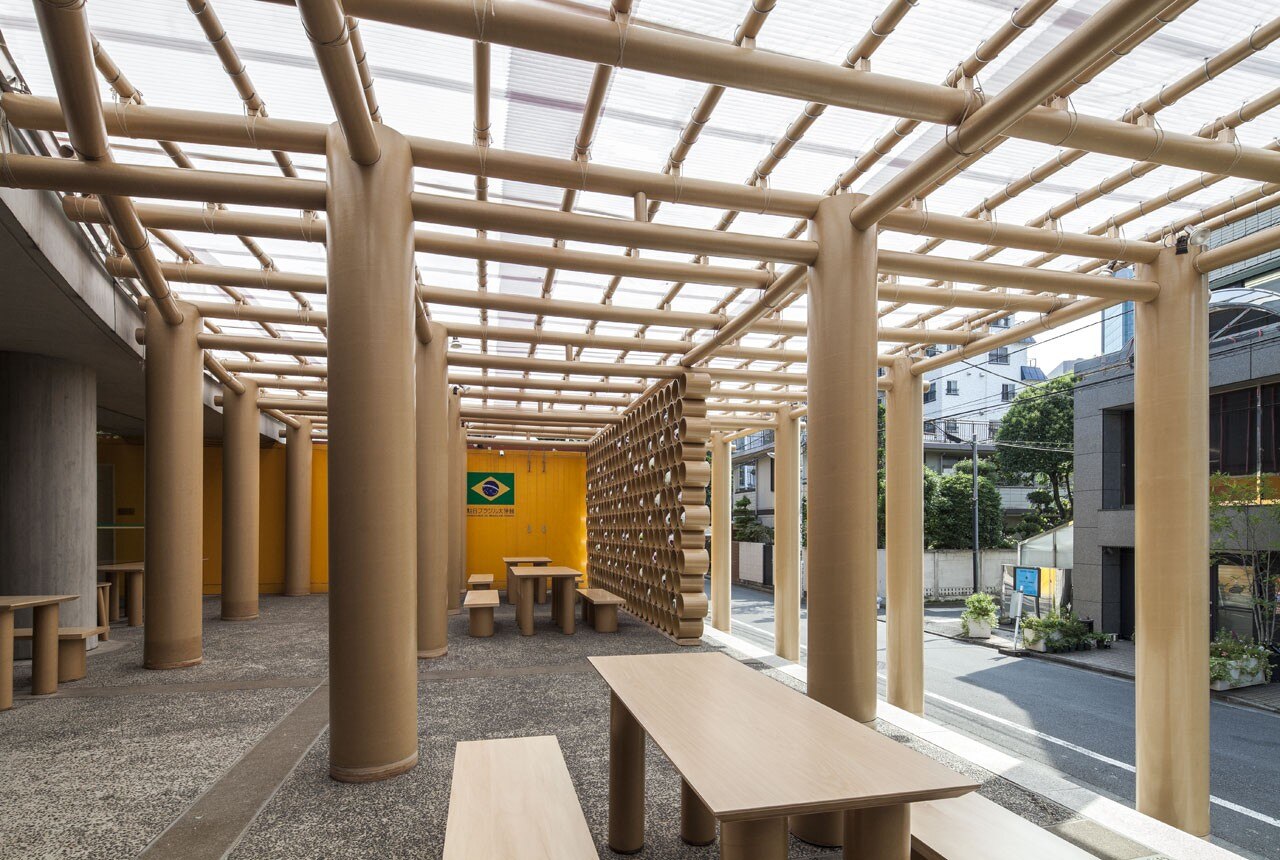
Football Pavilion 2014
Location: Tokyo, Minato-ku
Period: 11 June – 18 July 2014
Design and site supervision: Shigeru Ban, Nobutaka Hiraga, Grant Suzuki, Hernan Concha Emmrich
Key program: event space
Site area: 158 sqm
Total floor area: 124 sqm
Client: Embassy of the Federative Republic of Brazil in Tokyo

